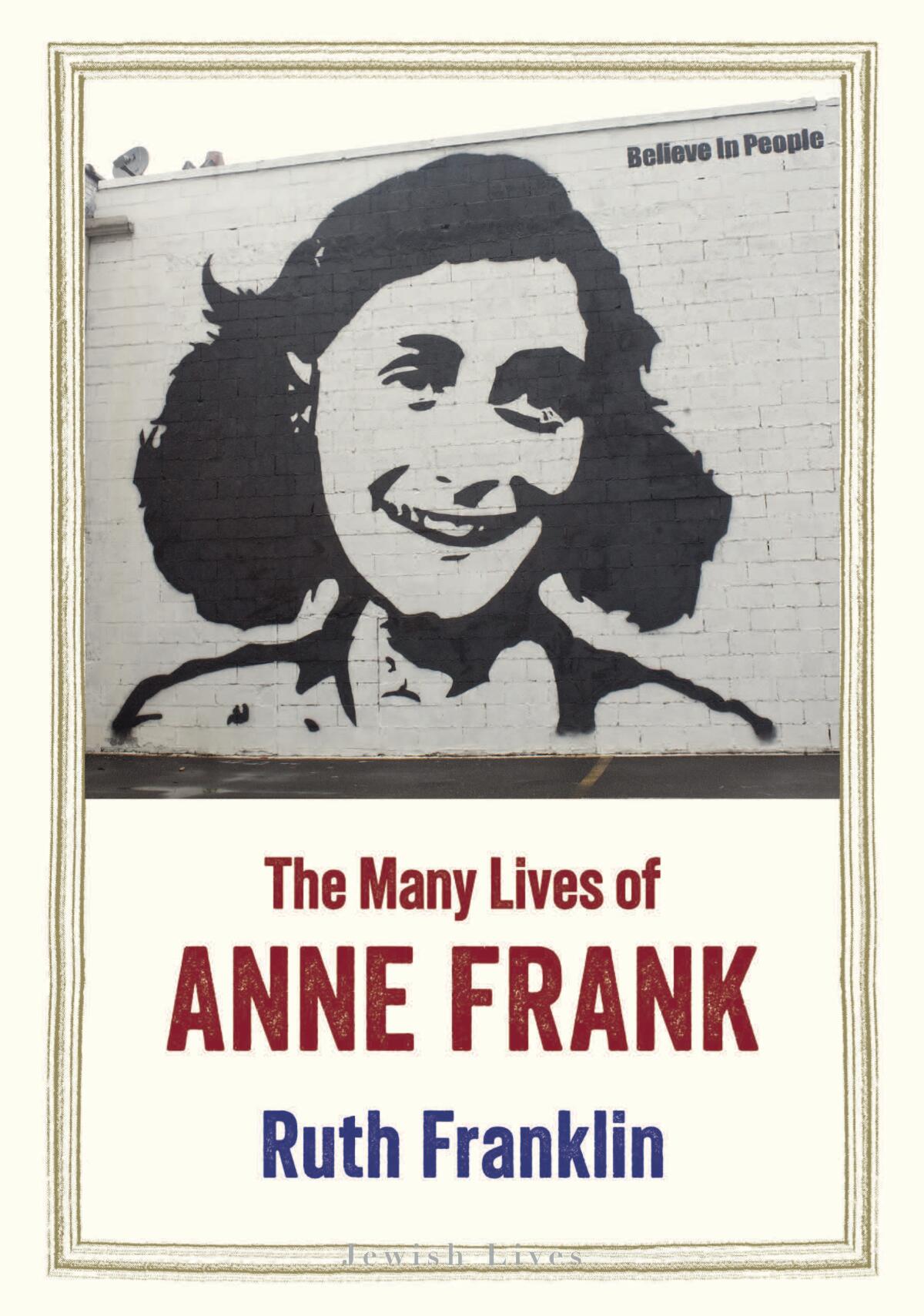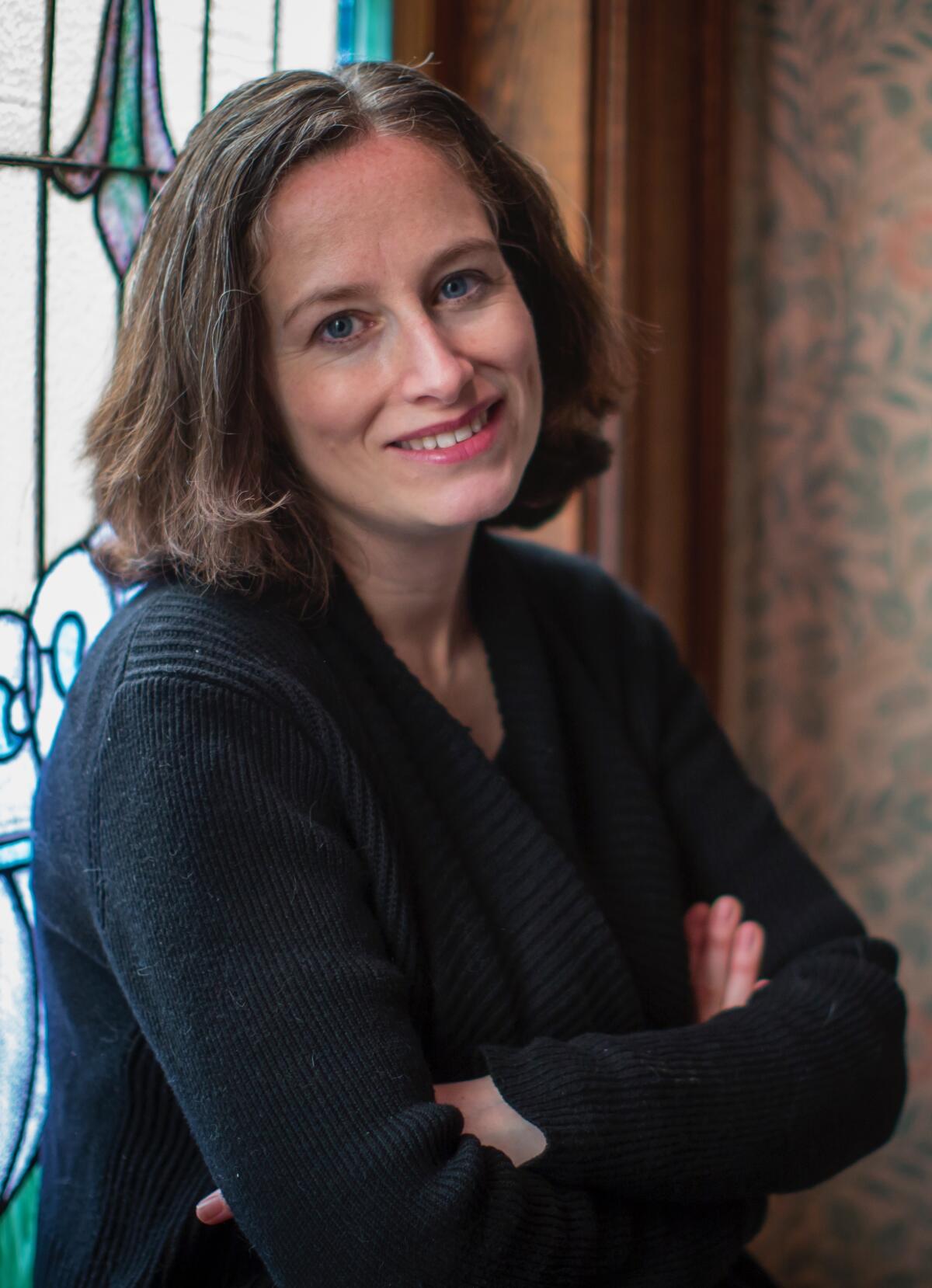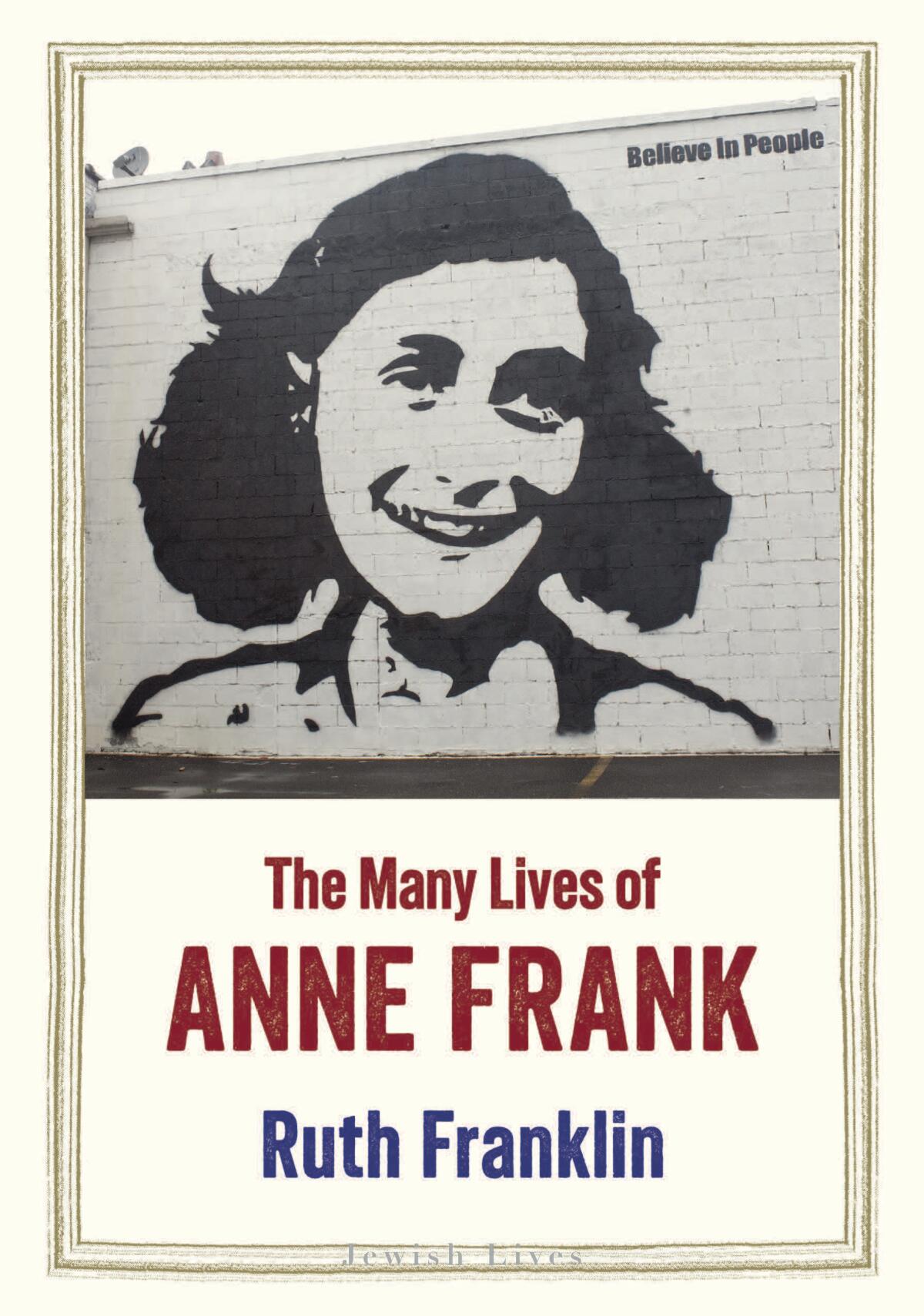Book Review
The Many Lives of Anne Frank
By Ruth Franklin
Yale University Press: 440 pages, $30
If you buy books linked on our site, The Times may earn a commission from Bookshop.org, whose fees support independent bookstores.
The 2003 movie “Anne B. Real,” based on “The Diary of Anne Frank” but set in East Harlem, is “the coming of age story of a young female rapper, who finds her inspiration” in the writings of the girl who would perish in a concentration camp, according to IMDB. Uh-oh. You might expect Ruth Franklin to take everyone associated with the film to task in her new book, “The Many Lives of Anne Frank”: The charge of careless cultural appropriation seems almost too easy to make.
But Franklin doesn’t make it. Despite the film’s “clunky moments,” she writes, director Lisa France treats the sensitive source material with obvious respect. It’s an assessment characteristic of Franklin’s humane, generous take on one of the most famous books ever published; according to the Anne Frank Center USA, more than 30 million copies of the diary have been sold.
“The Many Lives of Anne Frank” is not the kind of book that uses historical grievance as a cudgel against present-day sensibilities. Franklin writes with a rare combination of lightness and equanimity, with little sanctimony or finger-wagging. If she chides New York Times columnist Nicholas Kristof for declaring a Syrian girl the modern-day Anne Frank in a 2016 column about that nation’s civil war, she does so gently.
Franklin is more concerned about the tendency to treat the diary as “a saint’s relic, a text almost holy, not to be tampered with” — a popular attitude that “conflicts with the messiness of its reality.”
That reality began with Otto and Edith Frank, a prosperous Jewish couple from Frankfurt, Germany, escaping to Amsterdam with their two daughters, Margot and Anne, shortly after Hitler came to power in 1933. The Franks considered moving to the land then known as Palestine, but like many other German Jews, “they felt they belonged in Europe, or possibly America, but not in the Middle East.”
Anne’s childhood in the Netherlands was perfectly pleasant at first. She lived in a handsomely furnished two-story apartment (meticulously re-created by Franklin, who has done her research but isn’t showy about it) in the Rivierenbuurt (“River District”). She attended a Montessori school. She adored Shirley Temple. She went to sleepovers. “She always wanted to be the center of attention,” a schoolmate recalled.
These are ordinary details, and that is the point. Just as the perpetrators of the Holocaust were not all psychopathic monsters (many were credentialed professionals, as the historian Christopher R. Browning documented in his chilling “Ordinary Men”), the victims weren’t marked for savage destruction because they didn’t have the good sense to flee when they could or grasp what “resettlement to the east” — Nazi code for extermination — really meant. Normal people like you and me were on both sides of this terrible equation.

Hitler invaded the Netherlands in the spring of 1940, during a period when every move he made seemed to be evidence of his military genius. Jewish desperation and suicide proliferated. “Many who applied for exit permits appeared at the relevant offices with bandaged wrists and throats,” one observer noted.
Chastened by the rapidity with which antisemitism took over orderly Dutch society, Otto Frank tried to obtain a U.S. visa. It was an inopportune time to do so, with Washington gripped by anti-immigrant sentiments marked by more than a tinge of antisemitism. Luckily, Otto had been preparing for the possibility of hiding for years. So on July 6, 1942 — a day after Margot was summoned by the Nazis, ostensibly for a work detail but really as a prelude to Auschwitz — the Franks hid themselves in an annex above Prinsengracht 263, the warehouse where Otto, a spice and herb merchant, had set up shop.
They would spend 761 days in hiding, a period that Anne famously documented in “Het Achterhuis” (“The Secret Annex”). But as powerful as that chronicle is, it is also the work of a 13-year-old girl with little access to the outside world. Franklin provides context that gives her story a new, edifying fullness.

Ruth Franklin
(Anthony DelMundo)
The diary, as Franklin writes, is “a study of human psychology under extreme stress.” And it is the story of a girl coming of age, discovering her personality and sexuality. A passage in which Anne longs to touch another girl’s breasts has recently drawn the ire of groups such as the far-right Moms for Liberty, whose crude, frothing opprobrium every author and publisher should accept with pride.
The annex where the Franks hid was discovered by the Nazis on Aug. 4, 1944. To this day, nobody can say for sure who gave them up. They were sent to Westerbork, a transit camp close to the Dutch-German border, and then to Auschwitz.
By this time, the Allies were closing in on the Third Reich from both east and west. And yet the killing continued — evidence for many historians that murdering Jews, rather than any geopolitical goal, was the true raison d’être of Hitler’s deranged regime.
Anne and Margot died within a day of each other amid a typhus epidemic at Bergen-Belsen. But even in her final days, Anne remained what she had become in the secret annex: a writer. “We stood there, dreaming about her book being published, about a reality in which she would become a famous writer,” her fellow inmate Nanette Konig would recall.
The second half of Franklin’s book is about how that dream came true. In some ways, given how much we already know about Frank’s plight, it is the more fascinating story. Much less is known about how Otto, who would turn out to be the Frank family’s sole survivor, recovered the diary and saw it through to publication. “Otto’s desire to share it bordered on compulsion,” Franklin writes.
It is partly a testament to his success that the diary has taken on a life of its own. Inevitably, Franklin tells the story of Meyer Levin, whose staging of the diary turned into an intellectual and legal debacle. It was only the first.
A few years ago, the Harvard Lampoon rendered Anne Frank as a bikini model. Shalom Auslander’s novel “Hope: A Tragedy,” in which a couple moves to upstate New York to find an aging Anne Frank living in their attic, is, conversely, a profitably outlandish riff on her legacy. In an interview Franklin cites, Auslander praised Frank as a “cool kid” who “was not going to grow up and be a wallflower.” Probably not, but we will never know.
By refusing to try to police the interpretation of Frank’s legacy, Franklin allows its poignant universality to come through with all the refulgence it deserves. She writes, “For the ‘Diary’ to fully realize its potential — not as a bestseller, but as a book that can combat prejudice of all kinds — it must perform the difficult balancing act of being at once universal and particular.”
It is unusual for a book to have a companion as faithful and elegant as the one Frank’s diary finds here. Franklin has performed an invaluable service — or, to put it another way, a mitzvah.
Alexander Nazaryan writes about politics, culture and science.
